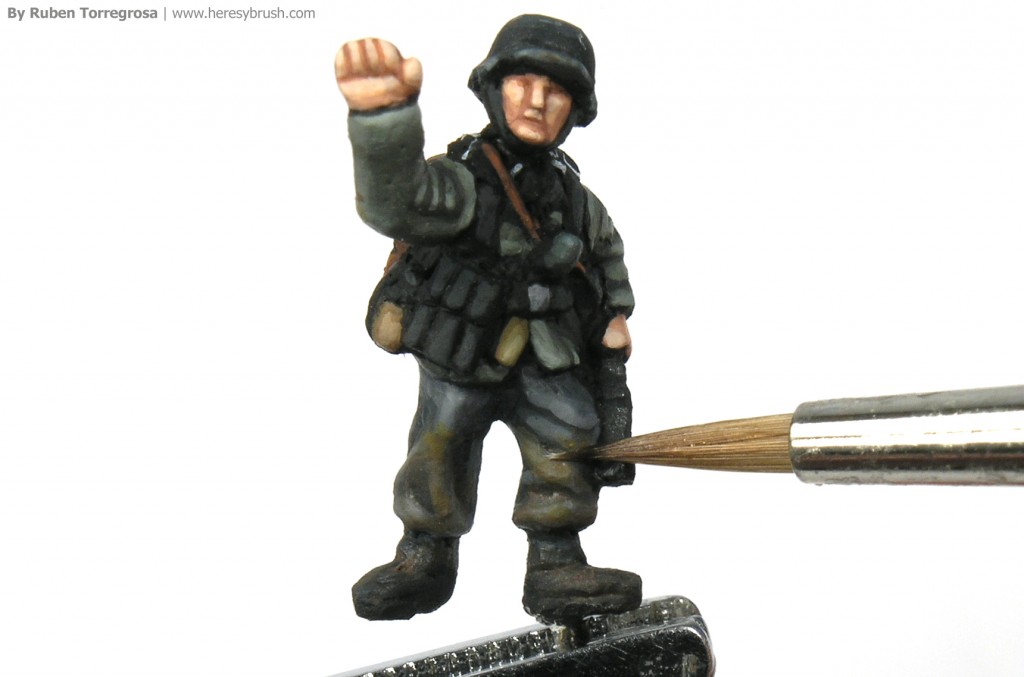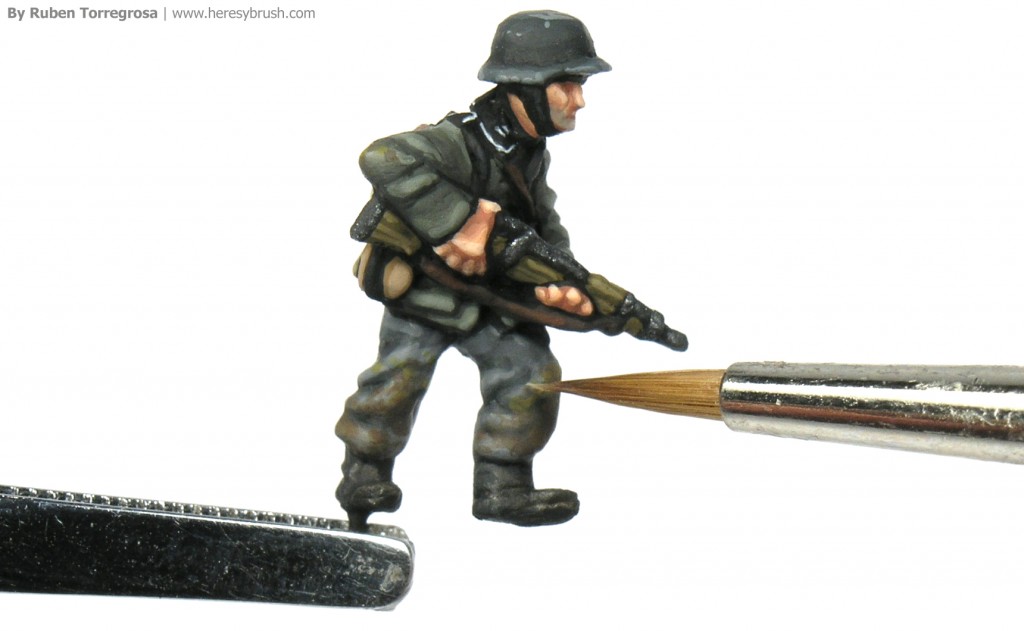In the same way that the mud accumulates on vehicle’s underbody because their daily use, in rainy seasons soldiers have to cross muddy roads and flooded trenches. So, inevitably, their clothes are stained with mud.
In this case I wanted represent a light mud effect. Thus, I’ve only stained a little the boots, knees and elbows (we can assume the soldiers throw themselves down against an air or artillery attack!). I don’t like add too much mud at this scale, because the effect can ruin the final result: if we cannot correctly difference the model, this could be not attractive for our eyes.
To simulate the mud effect I’ve used two brown tones: a darker color to represent fresh mud, such as Dark tracks 722 (AK-Interactive). And another lighter tone to replicate dry mud, such as Dry light mud 724 (AK-Interactive). To recreate mud we can apply a first layer of dry mud (light color) on the top areas, which are farther from the humid. If we want a random effect, we should thin the paint a little and don’t follow any logic when we apply the strokes. Mud splashes are too aleatory!, However, we have to be careful. Remember: “sometimes less is more”.
Then, we start working the fresh mud areas (dark color) in the same way, but now we focus on the bottom zones. Both colors should be in contact. Although it’s usually elbows only present dry stains. In legs we concentrate on boots and knees. We can also put on some mud rests on helmet, because the soldiers could leave it on the ground.

COLOR CHART:
Fresh mud: Dark tracks 722 (AK-Interactive) or Chocolate brown 872 (Vallejo)
Dry mud: Dry light mud 724 (AK-Interactive) or German Cam. orange ochre 824 (Vallejo)

